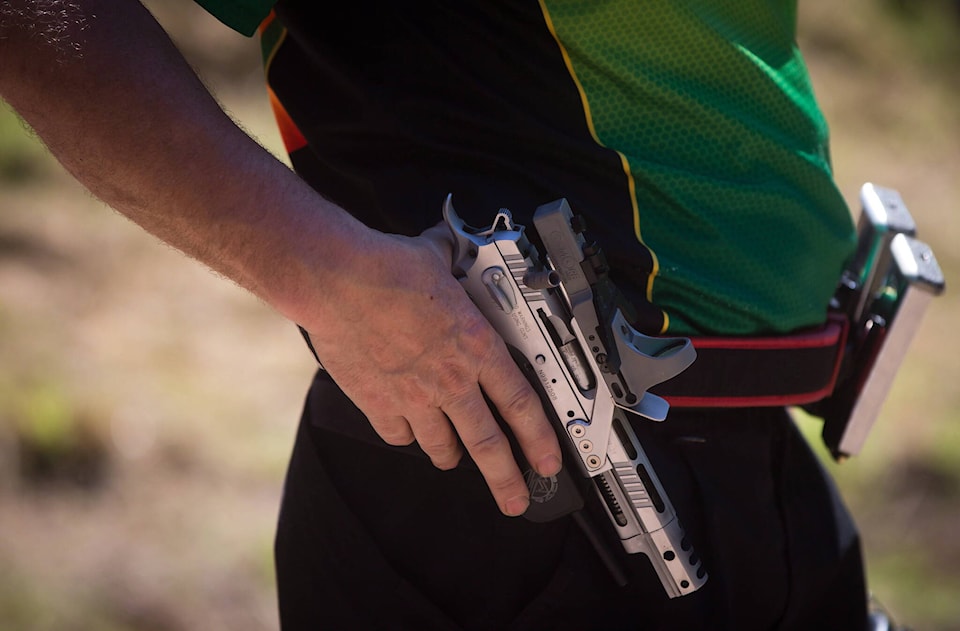A national freeze on importing, buying or selling handguns is a central feature of firearm-control legislation tabled Monday by the federal Liberals.
The government says the bill would also allow for the removal of gun licences from people involved in acts of domestic violence or criminal harassment, such as stalking
The Liberals plan to fight gun smuggling and trafficking by increasing criminal penalties, providing more tools to investigate firearms crimes and strengthening border measures.
The bill would create a new “red flag” law allowing courts to require that people considered a danger to themselves or others surrender their firearms to police.
The government says the measure would guard the safety of those applying through the process, often women in danger of domestic abuse, by protecting their identities.
The Liberals also say they will require long-gun magazines to be permanently altered so they can never hold more than five rounds, as well as ban the sale and transfer of large-capacity magazines under the Criminal Code.
Public Safety Minister Marco Mendicino has already tabled regulatory amendments in Parliament to ensure the national freeze on handguns can be implemented swiftly, the government said in a news release.
“These regulations will help stop the growth of personally owned handguns in Canada and are expected to come into force in fall 2022.”
The number of registered handguns in Canada increased by 71 per cent between 2010 and 2020, reaching approximately 1.1 million, according to federal statistics. Handguns were the most serious weapon present in the majority of firearm-related violent crimes between 2009 and 2020.
The legislation tabled Monday builds on previous federal steps.
Two years ago the government announced a ban on over 1,500 models and variants of what it considers assault-style firearms. The Liberals plan to introduce a buyback program to offer compensation to affected owners and businesses.
The government promised Monday to ensure such firearms are automatically prohibited when they enter the market in future. “We will continue working to ensure any new weapons that fit the definition of assault-style weapon are captured.”
Several women’s groups recently implored the government to do away with the “red flag” provision, included in an earlier bill that expired with last summer’s general election call.
The groups said it downloads responsibility for gun-law enforcement from authorities onto others, including possible targets of violence.
“Citizens or other organizations, much less potential victims, should not be expected to put themselves at risk by going to court to request action that should be immediate and within the direct responsibility of police,” their letter said.
The government appears to have acknowledged the concern by allowing the identities of vulnerable people to be shielded during the court process.
—Jim Bronskill, The Canadian Press
RELATED: New handgun restrictions expected in federal firearm-control bill today
